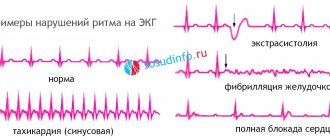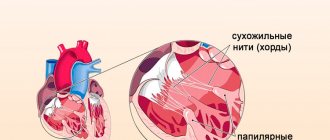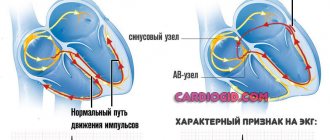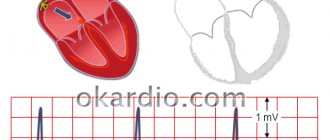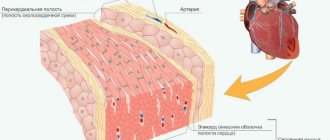Tumor malignancy
Morphological examination of removed cancer tissues, as a mandatory stage of diagnosis, helps determine the malignancy of the tumor. There are trillions of cellular structures in the human body, the basis of which is about 100 different types of cells: each of them can degenerate into cancer. In this case, the result of degeneration-transformation can be morphologically very close to the initially normal cell. Or so different that there seems to be nothing to compare with.
The malignancy of a tumor is the degree of cellular changes, indicating the aggressiveness of the Carcinoma: the higher the number after the letter G , the more different the malignant neoplasm is from the original tissue at the site of cancer.
In children
In children, infection develops due to congenital abnormalities of the urinary tract, rare emptying of the bladder and various types of functional disorders. Symptoms appear depending on age. Children under the age of 1.5 years are unlikely to be able to explain what hurts them, but they lose their appetite, become whiny and irritable. In some cases, a not very high temperature may rise for no apparent reason, which antipyretics cannot cope with. Children over 2 years of age may complain of pain in the back or lower abdomen. In addition, at this age, frequent urination is already noticeable.
The examination for suspected UTI should be comprehensive.
Be sure to do a clinical blood test, a general urinalysis and a bacterial culture of urine to determine the causative agent of the infection. It is believed that all children suspected of having this infection should undergo an ultrasound of the genitourinary organs to understand the causes of the obstruction of the outflow of urine. In boys, at the first case of cystitis, voiding cystography is performed (this is a type of X-ray contrast study), in girls - when the disease reappears.
Treatment of this disease in children should be comprehensive, because it is necessary to eliminate not only the causative agents of the disease, but also the cause itself. Most often, with proper treatment, such infections go away without a trace. However, sometimes consequences such as arterial hypertension or minor renal dysfunction remain. In this case, the child must be registered at the dispensary.
Degrees of malignancy
Histological diagnosis is the morphological variant of the tumor and the degree of malignancy. There are 3 degrees:
- High degree of differentiation of tumor tissue (G1) - the cells of the primary lesion differ from the normal cellular structures of the remote organ or tissue, but are morphologically similar: the histologist has no doubt that the basis for the malignant degeneration was the cells from this particular organ or tissue;
- Average degree of differentiation (G2) - similar features of the original tissue are preserved, but there are more differences: histologically, the tumor is very different from the norm, but has not yet moved so far;
- Low grade (G3) - cancer cells have very little resemblance to the organ or tissue in the primary lesion: the histologist immediately understands that this is a foreign and aggressive beast.
It is necessary to pay attention to the digital value of criterion G in the diagnosis: poorly differentiated tumors are always prognostically worse, with G 1 the chances of recovery are much higher.
Diagnosis
I
Diagnosis (Greek: diagnosis recognition)
a medical report about an existing disease (injury) or cause of death, expressed in terms provided for by the current classification of diseases, as well as about special physiological conditions of the body (for example, pregnancy) or about an epidemic focus. Based on the task and characteristics of establishing D., several of its types are distinguished. The main ones include clinical, pathological, forensic, and epidemiological diagnosis.
The clinical diagnosis is the final part of the diagnostic process or is formulated at certain stages of the examination of the patient, which is reflected in medical documents (see Medical record of an outpatient patient, Medical record of an inpatient patient). When initially establishing D., its rationale is stated. Clinical D. is of utmost importance for medical practice, because. is the basis for choosing treatment tactics for the patient.
There are two positions in the approach to the essence of clinical diagnostics. One of them assumes the most perfect “diagnosis of the patient,” reflecting the individual characteristics of the patient (constitution, reactivity, age, etc.) and the characteristics of the onset and course of the disease, most of which are currently customarily presented in the clinical Epicrisis. Another position, more suitable for studying the structure of morbidity and mortality, is to recognize the sufficiency of the “diagnosis of the disease”, formulated in accordance with the nomenclature and classification of diseases. This approach to clinical diagnostics presupposes the commonality of principles and methods of diagnosis, treatment, and prevention of certain groups of diseases, but does not exclude justified deviations in specific conditions. According to this generally accepted approach, the leading principle in the construction of D. is the nosological principle, i.e. the diagnosis must contain the name of a specific disease (injury), reflecting its essence. Other elements of clinical diagnosis clarify this essence (according to etiology, pathogenesis, functional disorders, etc.) or give an idea of the course, complications of the disease, etc. Thus, in clinical D., in a number of cases, periods of exacerbation or remission of the disease (for example, peptic ulcer disease, chronic bronchitis), its stage (for example, in hypertension, sarcoidosis) are indicated; in the presence of an inflammatory process, its phases (active, inactive) and degree of activity; The course of the disease is characterized (acute, subacute, protracted or chronic).
An indication of the etiology of the disease (etiological D.) in clinical D. is advisable in cases where etiological diagnostic methods are used in clinical practice to determine patient management tactics. Thus, supplementing the D. of acute pneumonia with an indication of the bacterial (more specifically, staphylococcal, pneumococcal, etc.) or viral nature of the disease makes it possible to more accurately determine the nature of etiotropic treatment (the main one for this disease) and anti-epidemic measures. For many infectious and parasitic diseases, there is no need to reflect their etiology in D., because it is clear from the nosological designation of the disease (tuberculosis, poliomyelitis, ascariasis, etc.).
The morphological characteristics of the disease (morphological D.) are sometimes contained in the name of the nosological form (for example, polycystic kidney disease, uterine fibroids, esophageal diverticulum), but in some cases it can be specifically included in the clinical D. in order to clarify the features of the morphological substrate of the disease that are important for treatment tactics (for example, a penetrating ulcer of the body of the stomach, large-focal myocardial infarction of the posterior wall of the left ventricle with the development of a cardiac aneurysm, etc.). In diseases such as hemoblastosis, morphological D. is crucial for choosing a treatment method.
Features of the pathogenesis of the disease and its complications (pathogenetic D.) are introduced into clinical D. to indicate established qualitative features of the pathology that are important for clarifying its nature and for treatment (for example, iron deficiency anemia). In some cases, the pathogenetic characteristic is contained in the D. of the leading syndrome (for example, nephrotic syndrome).
An indication of the presence and degree of functional insufficiency of the affected organs and systems of the body constitutes an important part of clinical diagnosis in many diseases, justifying the need for targeted therapeutic and rehabilitation measures, as well as modes of sparing the impaired function (for example, limiting physical activity in case of cardiac and respiratory failure, special diets for renal or digestive failure, etc.). There are, for example, three degrees of circulatory failure, joint function, pulmonary failure, etc., designated in D. by Roman numerals I, II, III, which usually corresponds to mild, moderate and severe functional failure.
When formulating D., the main disease is indicated in the first place, complications of the main disease in the second, and concomitant diseases in the third. The main disease is considered to be a disease (injury), which itself or through a complication associated with it was the reason for seeking medical care or hospitalization or death of the patient. It must correspond to the nosological form (for example, cholelithiasis) and be formulated according to the nosological classification of diseases, and not as a syndrome (for example, obstructive jaundice) or a list of symptoms (for example, vomiting, abdominal pain). It is unacceptable to express the underlying disease using a group concept, for example, “nephritis” instead of “acute glomerulonephritis” or “acute pyelonephritis,” etc. A complication is a secondarily occurring pathological condition or pathological process that is pathogenetically related to the underlying disease. Concomitant diseases are considered to be diseases that the patient has, which are independent, etiologically and pathogenetically not related to the main disease of the nosological form, and have their own nomenclature classification.
If a patient has multiple pathologies, it is sometimes difficult to determine the main and concomitant diseases, as well as whether any complications that arise belong to them. In some cases, it is advisable to indicate as the main disease a disease that is more severe in course or prognosis, for example, if a patient with dilated cardiomyopathy and severe progressive heart failure also has uncomplicated lung cancer without metastases, the main disease should be considered dilated cardiomyopathy, the complication is stage III circulatory failure , concomitant disease - lung cancer. The relationship between several diseases can be determined in clinical D. by such concepts as “competing diseases,” “combined diseases,” and “background disease.” Competing are mutually independent diseases that equally threaten the life of the patient, for example, with the simultaneous development in a patient of an extensive transmural myocardial infarction and massive thromboembolism of the pulmonary arteries caused by phlebothrombosis of the extremities, competing diseases act as the main ones: myocardial infarction and phlebothrombosis with its complication (thromboembolism). Combined diseases include diseases that, taken individually, do not threaten the patient’s life, but due to a combination of complications can lead to death, for example from respiratory failure in a combination of decompensated heart disease and chronic obstructive bronchitis, from renal failure in a patient with diabetic nephropathy and chronic pyelonephritis. Each of the competing and combined diseases receives its own rubric code. A background disease is considered to be a disease that played a significant role in the occurrence and unfavorable course of the main disease, considered in relation to the background disease as a second disease. Background diseases include, for example, hypertension and atherosclerosis of the corresponding arterial basins during myocardial infarction and cerebrovascular diseases, diabetes mellitus during tuberculosis and purulent processes. It must be taken into account that in relation to their complications, these same diseases are considered not as background diseases, but as main ones. Thus, hypertension is indicated as the underlying disease in the development of renal failure due to the formation of a primary wrinkled kidney, and diabetes mellitus is indicated in the development of diabetic coma, diabetic gangrene of the lower extremities and renal failure due to diabetic nephropathy.
According to the method of establishing clinical D., a distinction is made between direct D., established by a typical set of signs or the presence of pathognomonic symptoms, and differential D., based on identifying differences in the manifestations of a given disease and diseases with a similar clinical picture. According to the timeliness of establishment, early D. is distinguished - in the preclinical stage or at the initial manifestations of the disease, and late D., established during the period of a full-blown clinical picture or with existing complications. Undoubtedly late includes D., correctly established after analyzing the course of the disease over a long period (retrospective D.) or by analyzing the effect of treatment (diagnosis ex juvantibus). Based on the degree of evidence, a distinction is made between substantiated D., which is also final, and hypothetical, or preliminary, D.
In medical documents, the diagnostic stages are reflected in preliminary, clinical and final D. Preliminary D. is drawn up directly when the patient seeks help based on the data of the patient’s initial examination. The degree of its validity may vary, but it determines the scope of subsequent diagnostic examination and initial therapeutic tactics. According to the additional examination, a sufficiently substantiated clinical diagnosis must be established over the next three days, which will determine, if it differs from the preliminary one, changes in the tactics of examination and treatment of the patient. The final D. is formulated upon completion of the examination and discharge (or death) of the patient. This D. should be considered as unchangeable; it may turn out to be erroneous, as evidenced, for example, by cases of discrepancies between clinical and pathological D. When new data on the course of the disease are accumulated, the correctness of D. must be rechecked. If D.'s revision leads to an overestimation of the patient's ability to work or causes mistrust of the patient, it is necessary to resort to an expert inpatient examination. Cases of incorrect D. or treatment that does not correspond to the given D. are carefully analyzed and may become the subject of legal consideration.
Pathological diagnosis is the final part of the autopsy report, in which the pathologist, based on the analysis of morphological data and clinical materials, formulates a synthetic conclusion about the nosological form, dynamics of the disease (or diseases) and the immediate cause of death. Pathoanatomical D. is always in the nature of a clinical-anatomical analysis, and in some diseases that do not have characteristic morphological manifestations (for example, schizophrenia, diabetes mellitus), it is almost entirely based on clinical data. At this final stage of the diagnostic process, significant adjustments are often made to the lifetime clinical diagnosis.
The structure of the pathological diagnosis in most cases fully corresponds to the structure of the clinical diagnosis, i.e. includes the underlying disease, its complications and concomitant diseases. In recent years, cases of polypathies have increased significantly - a combination of several diseases with sometimes difficult to establish the relationship between their significance in thanatogenesis (see Thanatology). In this regard, the existing statistical reporting system, based on the International Classification of Diseases, IX Revision (ICD - IX) and postulating that the doctor performing the autopsy should select only one main cause of death in any situation, often puts not only the clinician, but also the clinician, in the difficult position of choosing the underlying disease. but also a pathologist. Therefore, the methodological recommendations of the USSR Ministry of Health found it advisable to additionally introduce into pathoanatomical D. such concepts as a combined underlying disease, competing, combined and background diseases.
In autopsy practice, two or more diseases found in one patient are usually called competing, each of which, by itself or through its complications, could be the cause of death. Combined diseases are such diseases, each of which is not fatal, but, developing simultaneously, ends in death. Background diseases are considered to be those diseases that were important in the etiology and pathogenesis of the underlying disease or caused the particular severity of its course. A combined underlying disease is usually understood as the simultaneous presence in a patient of competing and combined or background diseases. In the case of a combined underlying disease, any clinically unrecognized disease included in the combination is counted as a discrepancy in the underlying diagnosis. This approach cannot be considered overly rigid, much less formal, since everyday practice shows that, for example, bronchial asthma not taken into account by a surgeon can cause severe respiratory failure with a fatal outcome in the postoperative period.
New approaches to the formulation of pathological D. for polypathy suggest the following structure: a combined underlying disease, including competing, combined, background diseases; morphological semiotics of these diseases; complications of competing diseases; concomitant diseases and their semiotics. The diagnosis also reflects the pathology associated with the treatment, incl. with improper use of intensive care and resuscitation methods for terminal conditions.
In unclear cases, after the autopsy, the pathologist draws up a preliminary D., which is also indicated in the preliminary medical certificate about the cause of death. The final pathological D. should be formulated in the next two weeks after receiving test results, for example, cadaveric blood or urine, as well as after histological (histochemical, electron microscopic) examination of organs and tissues.
The pathoanatomical diagnosis is completed by a clinical and anatomical epicrisis, which substantiates the procedure for formulating the diagnosis, the relationship between the main and background diseases, and analyzes the pathogenesis of complications, as well as the mechanisms and cause of death. This most important part of D. in unclear cases should be agreed upon with the attending physicians. Unified pathological examination serves as the basis for state statistical data on the causes of death and mortality of the population in general.
Forensic medical diagnosis is a special conclusion about the nature of the injury (disease), the condition of the subject or the cause of death, drawn up on the basis of a forensic medical examination to resolve issues arising in forensic investigative practice, and expressed in terms accepted in forensic medicine. It is drawn up by a forensic medical expert or a doctor of another specialty who is entrusted with conducting a forensic medical examination. The formulation of D. depends on the nature of the object of examination and its goals. The tasks posed in this case are determined by the properties and characteristics of the event under investigation or the incriminated act. In the case of examining a corpse in case of violent death or suspicion of it, the main damage (disease) is identified in the structure of D., which itself or through a pathogenetically associated complication was the cause of death; main and additional complications caused by the main damage, and other complications not related to the main damage. When examining victims, accused and defendants, establishing the nature of bodily injuries is mandatory. The danger of these injuries to life at the time of their infliction and the associated temporary or permanent disability are determined. If necessary, the basis for forensic medical examination can be an expert analysis of medical documents and materials of the judicial investigation.
See also Epidemiological diagnosis.
Bibliography: Avtandilov G.G. Clinical significance and application of the international classification of diseases, Klin. med., t. 63, no. 7, p. 15, 1985; Vasilenko V.X. Introduction to the clinic of internal diseases, p. 79, M., 1985; Guide to the international statistical classification of diseases, injuries and causes of death, vol. 1-2, M., 1980-1983; Elshtein N.V. General medical problems of therapeutic practice, p. 120, Tallinn, 1983.
II
Diagnosis (diagnosis, Greek diagnosis recognition, diagnosis, Dia- + gnōsis cognition, knowledge)
a medical report on the state of health of the subject, on an existing disease (injury) or on the cause of death, expressed in terms denoting the names of diseases (injuries), their forms, course options, etc.
Anatomical diagnosis (d. anatomica) - see Pathological diagnosis.
Hypothetical diagnosis (d. hypothetica) - see Presumptive diagnosis.
Histological diagnosis (d. histologica) - D., based on data obtained from histological examination of biopsy or autopsy material; D. g. clarifies or complements clinical and pathological D.
Clinical diagnosis (d. clinicalis) - D., established on the basis of a clinical examination.
Morphological diagnosis (d. morphologica) is a component of clinical D., reflecting the nature and localization of morphological changes in the body.
Nosological diagnosis (d. nosologica, d. morbi) - D. containing the name of the disease in terms provided for by the accepted classifications and nomenclature of diseases.
The final diagnosis is D., formulated upon completion of the examination of the patient, as well as in connection with his departure from the medical institution or death.
Pathogenetic diagnosis (d. pathogenetica) is a component of clinical diagnosis, reflecting the relationship between individual clinical manifestations of the disease and characterizing the features of its pathogenesis and complications.
Pathoanatomical diagnosis (d. pathologoanatomica; synonym: D. anatomical, D. posthumous) - D., based on a set of information about the morphological changes found in organs during autopsy.
Late diagnosis (d. tarda) - D., established in the late stages of the disease.
Postmortem diagnosis (d. postmortalis) - see Pathoanatomical diagnosis.
Preliminary diagnosis - D., formulated directly when the patient seeks medical help on the basis of data obtained before the start of a systematic examination of the patient; D. p. is necessary to develop an examination plan and the initial stages of treatment.
A presumptive diagnosis (d. probabilis; synonym D. hypothetical) is a diagnosis that is not sufficiently substantiated by the available data and requires confirmation during the examination of the patient.
Early diagnosis (d. praecox) - D., established in the early stages of the disease.
Retrospective diagnosis (d. retrospectiva) - D., established by analyzing the course of the disease over a long period.
The diagnosis is symptomatic (d. symptomatica) - incomplete D., stating only individual manifestations of the disease (for example, anemia, hemiplegia).
The diagnosis is syndromic - D., formulated by isolating a syndrome that characterizes the main pathological process, when it is impossible to establish a nosological D.
Forensic medical diagnosis - D., formulated as a result of a forensic medical examination to resolve special issues that arise in forensic investigative practice.
Functional diagnosis (d. functionalis) is a component of clinical diagnosis, reflecting the nature and degree of disturbances in the activity of individual organs and systems of the body.
Etiological diagnosis (d. aetiologica) is a component of clinical diagnosis, reflecting the origin of the disease.
Diagnosis ex juvantibus (lat. juvo to help, facilitate, be useful) - D., based on an assessment of the results of the treatment.
Source: Medical Encyclopedia on Gufo.me
Meanings in other dictionaries
- diagnosis - DIAGNOSIS -a; m. [from Greek. diagnosis - recognizable] Determination of the essence and characteristics of the disease based on a comprehensive examination of the patient. Put d.D. was not confirmed. There is no diagnosis yet. ◁ Diagnostic (see). Kuznetsov's Explanatory Dictionary
- diagnosis - Diagnosis, diagnoses, diagnosis, diagnoses, diagnosis, diagnoses, diagnosis, diagnoses, diagnosis, diagnoses, diagnosis, diagnoses Zaliznyak’s Grammar Dictionary
- Diagnosis - (Greek diagnosis - recognition). Statement of the process, state, phenomenon being studied. In medicine, a conclusion about the presence of a disease, its causes, severity, course and preservation of protective mechanisms. Explanatory dictionary of psychiatric terms
- diagnosis - Latin - diagnosis. The word “diagnosis” is Greek in origin and began to be used in Russian from the middle of the 19th century. and means “determination of a disease based on examination of the patient.” Derivatives: diagnostics, diagnostics, diagnosing, diagnostic. Etymological Dictionary of Semenov
- diagnosis - DIAGNOSIS in veterinary medicine (from the Greek diagnosis - recognition), a brief medical opinion about the essence of the disease and the condition of the sick animal, expressed in modern terms. vet. Sciences. There are... Veterinary encyclopedic dictionary
- diagnosis - Make a diagnosis Abramov's Dictionary of Synonyms
- diagnosis - a, m. Determination of the disease based on a comprehensive examination of the patient. To diagnose. [From Greek διάγνωσις - recognition] Small Academic Dictionary
- diagnosis - DI'AGNOSIS, diagnosis, male. (Greek diagnosis) (med.). Determination of the disease based on examination of the patient. The doctor made the correct diagnosis. Ushakov's Explanatory Dictionary
- diagnosis - DIAGNOSIS, a, m. Medical report on the state of health, definition of a disease, injury based on a special study. Deliver d. Clinical d. Preliminary, final d. | adj. diagnostic, oh, oh. Ozhegov's Explanatory Dictionary
- DIAGNOSIS - DIAGNOSIS (from the Greek diagnosis - recognition) - determination of the essence and characteristics of the disease based on a comprehensive examination of the patient. Large encyclopedic dictionary
- Diagnosis - So-called. recognition and definition of a disease on the basis of noticeable local changes, suspected causes, as well as especially outstanding phenomena. Therefore, D. is distinguished between anatomical, etiological and symptomatic. The art of recognizing a disease is called. Encyclopedic Dictionary of Brockhaus and Efron
- diagnosis - DIAGNOSIS a, m. diagnose f., German. Diagnosis <gr. dignosis recognition, definition. Identification of the disease based on examination of the patient. BAS-2. What kind of doctor is this.. is confused in every diagnosis; He prescribes either quinine or digitalin. Ivanovich From memorable. book Dictionary of Gallicisms of the Russian language
- diagnosis - noun, number of synonyms: 3 conclusion 51 definition 43 assessment 44 Dictionary of synonyms of the Russian language
- Diagnosis - (from the Greek diágnosis - recognition) a medical opinion about the essence of the disease and the patient’s condition, expressed in accepted medical terminology and based on a comprehensive systematic study of the patient. See Diagnostics. Great Soviet Encyclopedia
- diagnosis - orf. diagnosis, -a Lopatin's Spelling Dictionary
- diagnosis - diagnosis m. 1. Determination of a patient’s disease or condition based on his comprehensive examination. 2. transfer An assessment of the condition of someone or something based on a combination of the most characteristic features. Explanatory Dictionary by Efremova
- diagnosis - Diagnosis, m. [Greek. diagnosis] (med.). Determination of the essence of the disease and the patient’s condition based on his comprehensive medical examination. The doctor made the correct diagnosis. Large dictionary of foreign words
- diagnosis - Diagnosis/. Morphemic-spelling dictionary
- Blog
- Jerzy Lec
- Contacts
- Terms of use
© 2005—2020 Gufo.me
Significance of tumor cellular changes
It is important to understand: the malignancy of the tumor is one of the meanings of the diagnosis, necessary for a real understanding of the strength of Carcinoma. This does not mean at all that with G3 there is no chance of survival, and with G1 you can joyfully throw your caps - like, we have almost defeated the enemy.
Highly differentiated tumors are:
- Relatively slow rate of progression;
- Low risk of rapid and early metastasis;
- High sensitivity to drug therapy;
- High chances of long-term remission.
Poorly differentiated cancers are:
- Rapid growth of the primary tumor focus;
- Early metastases to lymph nodes and distant organs;
- Lack of positive response to chemotherapy;
- Low chances of survival.
It would seem that everything is simple: G1 is favorable, G3 is bad. But in life everything is much more complicated, because the prognosis for oncology is influenced by a lot of factors. The malignancy of a tumor is an important diagnostic element that must be paid attention to: a low degree of differentiation of cancer cells indicates that the enemy is strong, angry, unprincipled and aggressive. The war will be grueling and long, not every battle will be successful, after each battle it will seem that Carcinoma is getting stronger, but, nevertheless, there is always a chance of victory.


